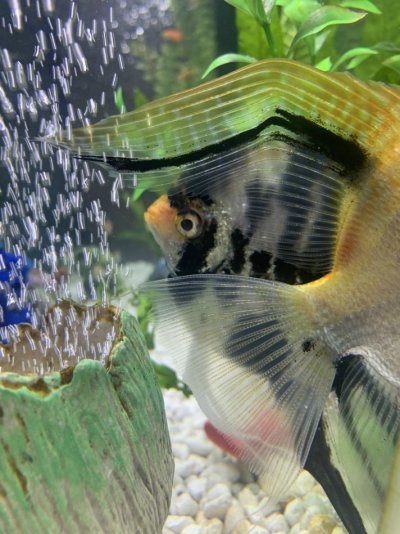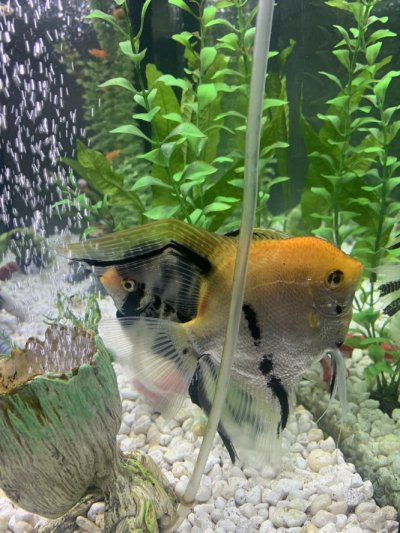Hey all,
Been awhile since I’ve posted here but I’ve run into a bit of a problem. As of a few weeks ago my 55 gallon tank consisted of…
2 Angelfish
2 Younger Pictus Catfish
1 Adonis Pleco
6 Priscilla Tetras
Starting about 3 weeks ago one of the Catfish died.
A week after the other catfish died.
Last week the Pleco died.
I do regular weekly water changes between 35-50% keeping the nitrates anywhere from 20-40 ppm.
Tonight my angelfish started to act funky. Resting at the bottom of the tank which they do sometimes but barely moving.
I have a yellow and a black one. My black one kept flipping upside down and now he’s fine. While inspecting him I noticed he has red around his nose and hose side fins look like they have no webbing, maybe one just paranoid but do they usually look like that?
Water parameters are:
PH was yellowish on my test indicating it was around 6. I just added some PH neutralizer.
Ammonia: 0
Nitrite: 0
Nitrate: 20-40ppm
What do y’all think is going on?
Been awhile since I’ve posted here but I’ve run into a bit of a problem. As of a few weeks ago my 55 gallon tank consisted of…
2 Angelfish
2 Younger Pictus Catfish
1 Adonis Pleco
6 Priscilla Tetras
Starting about 3 weeks ago one of the Catfish died.
A week after the other catfish died.
Last week the Pleco died.
I do regular weekly water changes between 35-50% keeping the nitrates anywhere from 20-40 ppm.
Tonight my angelfish started to act funky. Resting at the bottom of the tank which they do sometimes but barely moving.
I have a yellow and a black one. My black one kept flipping upside down and now he’s fine. While inspecting him I noticed he has red around his nose and hose side fins look like they have no webbing, maybe one just paranoid but do they usually look like that?
Water parameters are:
PH was yellowish on my test indicating it was around 6. I just added some PH neutralizer.
Ammonia: 0
Nitrite: 0
Nitrate: 20-40ppm
What do y’all think is going on?


